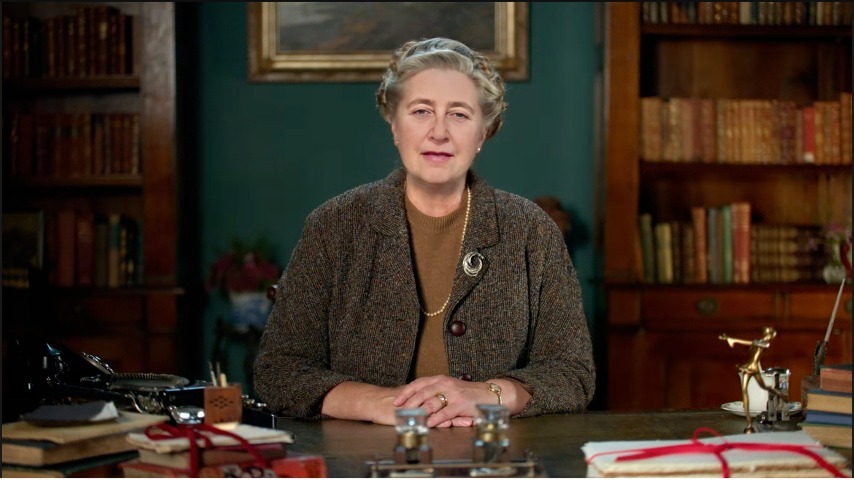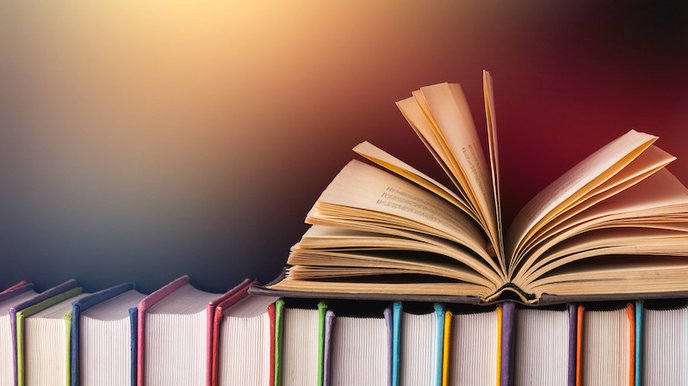Explore Taiwanese Modern Art with Virtual Museums
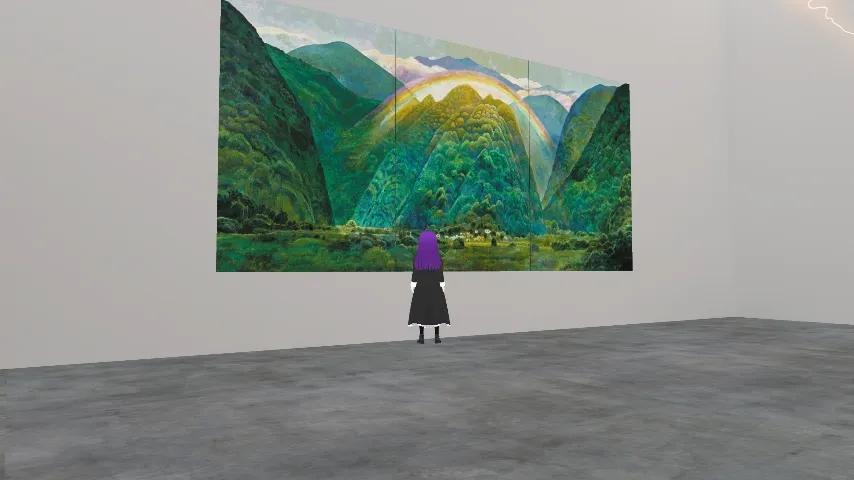
Metaverse
4-minute read
André Malraux, a renowned French public intellectual and former Minister of Cultural Affairs, proposed a concept in his book "Le Musée Imaginaire" (The Imaginary Museum) in 1947 that was ahead of its time but has increasingly become a reality in recent years with technological advancements. Malraux suggested that traditional museums, limited by physical space and geographic location, could not accommodate all significant works of art. However, by utilizing photography and printing techniques, an "imaginary museum" could be created, bringing together artworks from different eras and regions for the public to appreciate, much like the virtual museum experiences we have today.
Today, we have not only photography and printing but also digital twins—creating digital versions of art museums that allow people from any place and at any time to freely visit. This maximizes the significance of art museums as public spaces within cities, offering a modern art experience that transcends physical boundaries.
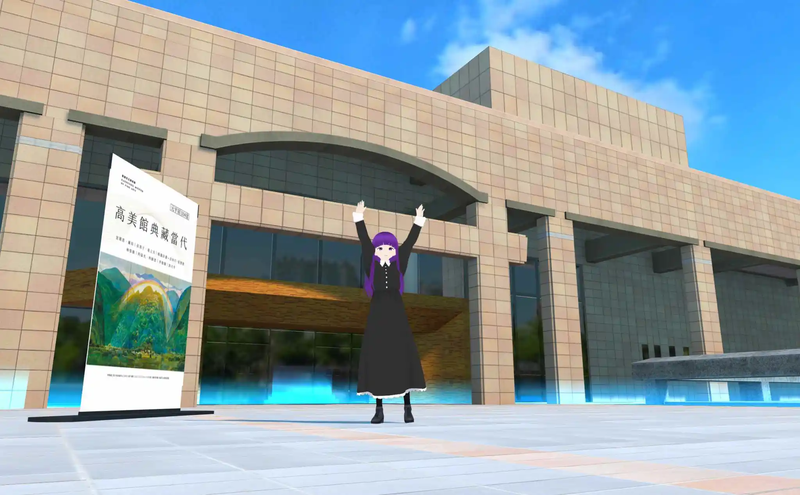
I recently visited the Kaohsiung Music Center in VIVERSE. In addition to this venue, VIVERSE also features another cultural landmark of southern Taiwan, the Kaohsiung Museum of Fine Arts (KMFA). The KMFA in VIVERSE is a realization of Malraux's "imaginary museum," showcasing a collection of contemporary artworks.
The Past and Present of KMFA: From a Pond Wetland to an Art Park
The Kaohsiung Museum of Fine Arts, located in the Neiweipi Cultural Park in Kaohsiung, opened in 1994, with planning beginning in the 1980s. The original site, Neiweipi, was once Kaohsiung's largest pond wetland. As the wetland receded, the surrounding area gradually became private land and factory buildings until the completion of KMFA. It wasn't until around 2000 that the area was fully cleared. Because most of the park area was still occupied by factories during construction, the KMFA is situated deep within the park.
The history of KMFA's construction is a story of a city opening up space for the public and inviting art to reside within it. Today, the KMFA is not only a popular spot for locals to stroll but also houses many Taiwanese contemporary artworks, especially those from the Austronesian language family, including creations by Taiwan's indigenous peoples.
Notably, if you look closely at the main building's skylight, you'll find it shaped like a truncated triangle. According to the architect's recollections, the design was inspired by the nearby half-mined Banping Mountain.
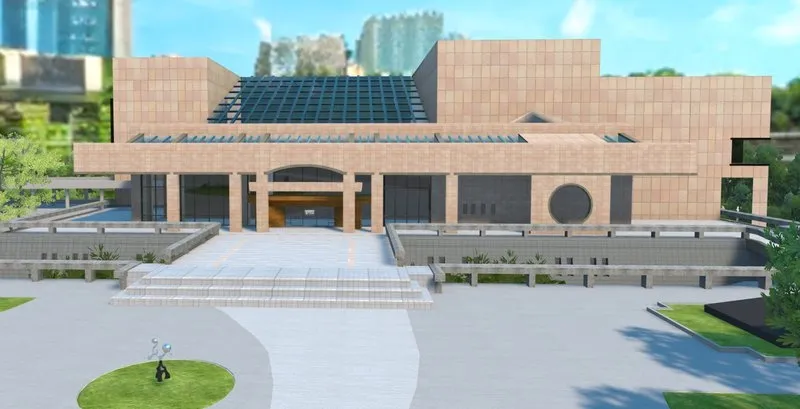
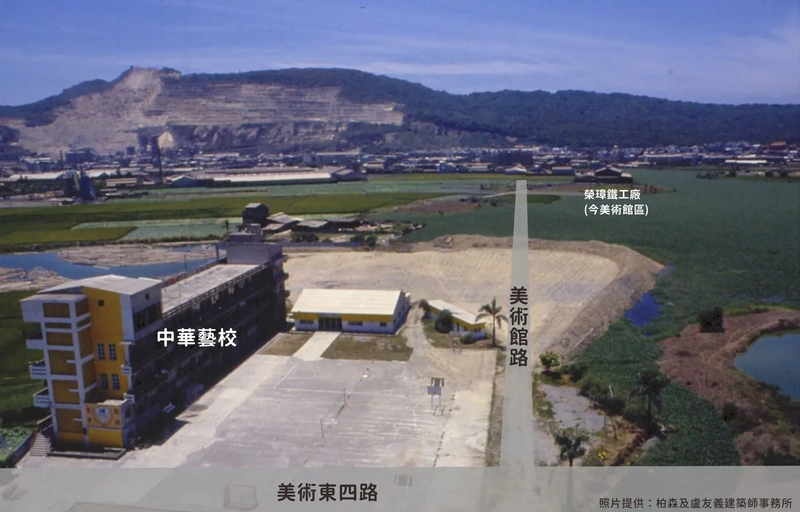
The Blessings of the Land, Kaohsiung Harbor, and the Spirit of the Ocean are Embraced
Upon arriving at the grand entrance plaza of VIVERSE's KMFA, you can see that "Metaverse Room 104" and "Metaverse Room 305" are currently exhibiting "KMFA's Contemporary Collection" and "My Love for Flying Dragons and Galloping Tigers — A Solo Exhibition by Wang Wu." You can truly enjoy exhibitions in VIVERSE, a virtual museum that brings André Malraux's vision of an imaginary museum to life!
Entering the museum, the first thing that catches your eye is the majestic lobby, which made me stop and look up in admiration for a long time. Moving forward leads to the entrance of Room 104, while the back allows access to Room 305.
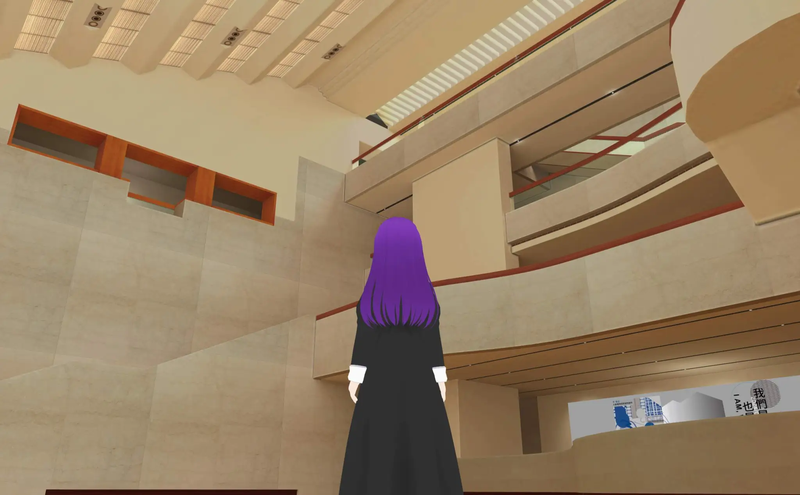
Throughout my visit, three artworks left a lasting impression on me. The first is Lin Hsing-Yueh's massive painting, "The Mountain Blessed by the Earth," measuring 332.7 × 217 cm. Lin is a master known for his vibrant and unrestrained depictions of Taiwan's natural landscapes. In "The Mountain Blessed by the Earth," the mountain is painted with a sense of childlike wonder, yet upon closer inspection, the delicate brushstrokes reveal intricate layers that offer a soothing, healing sensation; the central light and rainbow symbolize blessings, evoking a feeling of being immersed in their warmth.
It is said that during Lin Hsing-Yueh's retrospective exhibition at KMFA in 2019, "The Mountain Blessed by the Earth" was a popular spot for visitors to take photos. Now, you can capture as many pictures as you want in VIVERSE, a digital twin of the museum!
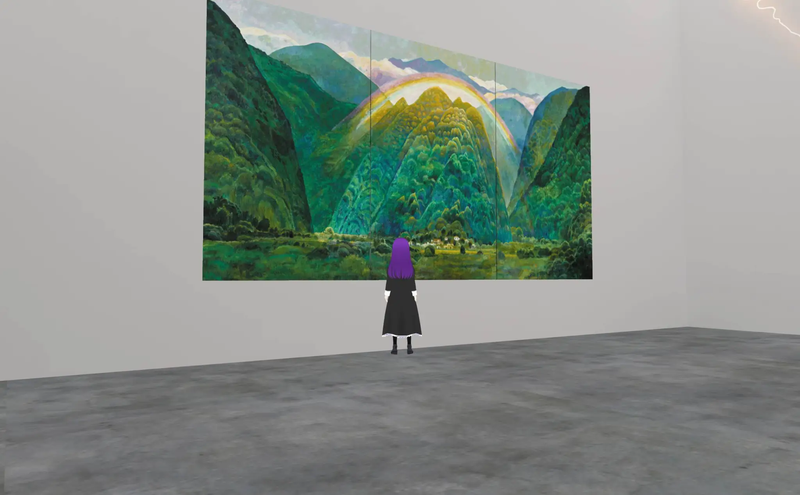
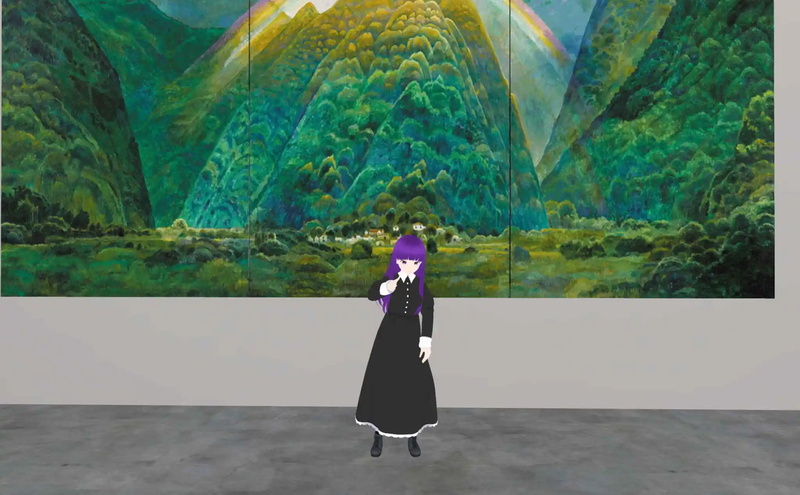
Next is Hung Tien-Yu's "Kaohsiung Harbor" on the opposite side. Having grown up in the mountains and worked as a fisherman, Hung's works often reflect the interaction, or rather, the exploitation between nature and humans; his style is realistic and profound.
This painting of "Kaohsiung Harbor" seems to depict the cityscape of the harbor area, but one immediately notices that nearly two-thirds of the canvas is white (representing the city and harbor area), contrasting sharply with the serene blue sea on the right. The city's portrayal through a kind of negative space highlights the vitality of nature. Hung Tien-Yu passed away last year, and through this painting, we can see the artist's concerns and spirit, which will now live on in VIVERSE, a platform that immortalizes modern art.
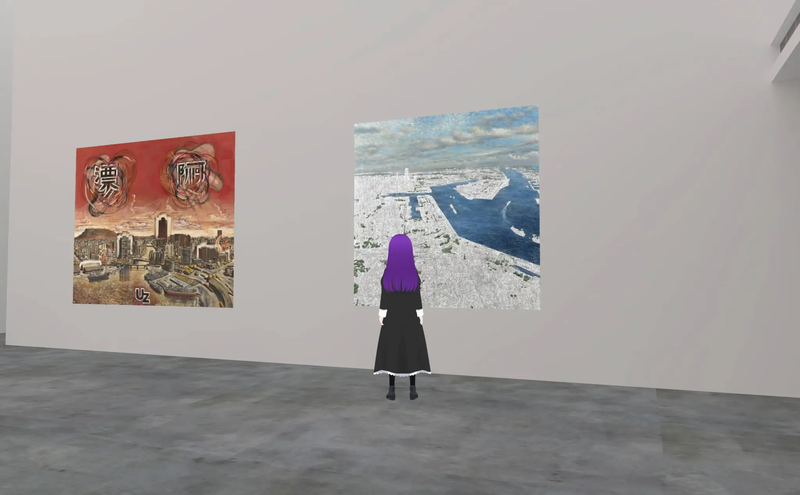
Finally, there are two works by Amis artist Rahic Talif, "Sunrise over the Pacific on Highway 11" and "Spirits of the Pacific on Highway 11."
These two pieces are large-scale flat installations made from oceanic plastic waste. In "Sunrise," Rahic Talif cuts and repurposes plastic into a speckled tapestry that, from afar, looks beautiful, but up close reveals its origin from marine debris. "Spirits" retains the original shapes of the plastic, such as the necks of bottles and the uncrushable creases, which resemble the faces and mouths of spirits whispering to the viewers. This method of breathing new life into discarded materials represents the concept of rebirth through the cleansing of the ocean.
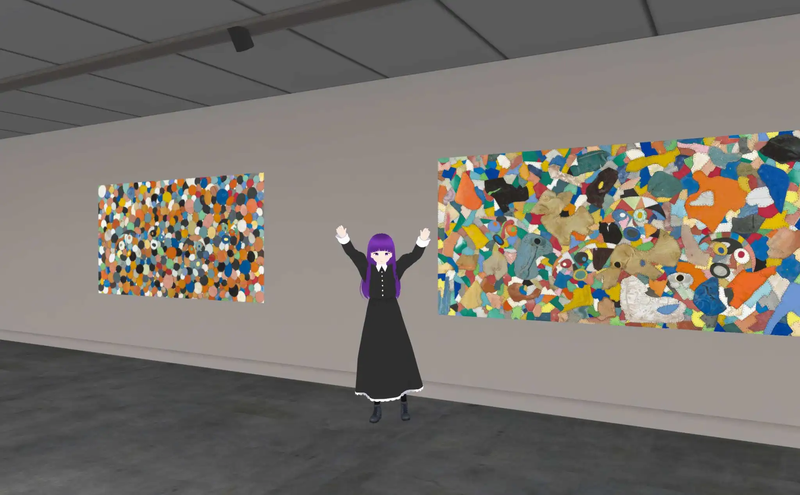
Returning to Malraux, it's not hard to see that both his famous quote "Art is the shortest path from man to man" and his museum discourse reflect his optimism for the future of art collections and his deep belief in the power of art.
Through VIVERSE, art not only becomes a means for people to reach each other — I "saw" the artistic thoughts expressed by Lin Hsing-Yueh, Hung Tien-Yu, and Rahic Talif.
